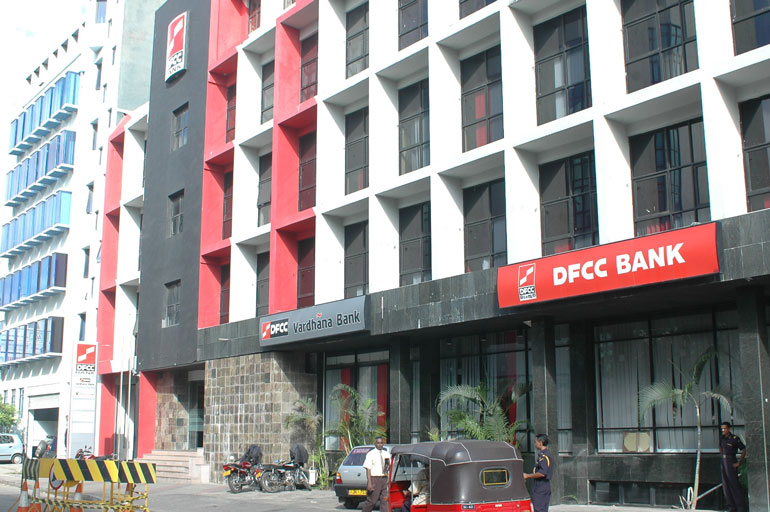Monday Nov 03, 2025
Monday Nov 03, 2025
Monday, 15 June 2015 00:00 - - {{hitsCtrl.values.hits}}
 One of the branches of DFCC Bank at W.A.D. Ramanayake Mawatha, Colombo 2
One of the branches of DFCC Bank at W.A.D. Ramanayake Mawatha, Colombo 2
Following are excerpts of DFCC Bank Chairman Royle Jansz’s review of the 2014/2015 Annual Report, during which he briefly recaps the institution’s 60 years of operation.
This year is special; it marks 60 years of DFCC Bank’s leadership in development finance. It is therefore fitting that I look back on some highlights of the bank’s compelling story – a story of a pioneer which has ventured boldly where not many have gone before.
DFCC Bank is one of the oldest development banks in Asia. Its role is emblazoned in the mandate to “assist the promotion, establishment, expansion and modernisation of industrial, agricultural and commercial ventures and to encourage and promote participation of private capital, both domestic and foreign in such enterprises.”
Epitomising the phrase ‘much more than money’, our yardstick is not just the number of projects we have facilitated or the sums lent but the role DFCC Bank has played in partnering trailblazing ventures and industry sectors.
For example, a milestone was achieved in 1967 when the bank financed Sri Lanka’s first beach resort hotel. The funding comprised both debt and equity, demonstrating our aptitude and appetite to partner with promoters at the risky start-up stage. This project proved to be the forerunner to many more that heralded the launch of Sri Lanka’s tourism industry.
In the years that followed, the bank partnered with entrepreneurs in several industries such as appliances, aquaculture, ceramics, food and beverages, garments, horticulture, packaging, plastics and rubber.
Later on, it included technology-driven industries like mobile telecoms and renewable energy. In the late 1980s, Sri Lanka was the first South Asian nation to introduce cellular telecoms. DFCC Bank was part of this effort and funded the first mobile operator.
The bank’s involvement in renewable energy is noteworthy. DFCC Bank financed, with both debt and equity, Sri Lanka’s first private sector grid-connected mini-hydro power plant, which was commissioned in 1996.
The success of this project was the catalyst for several others and this subsector now supplies over 8% of the country’s electricity needs.
DFCC Bank also assisted Sri Lanka’s first private sector wind power project, which has spurred other wind power projects, leading to a total capacity addition of over 124 MW to the national grid. Underpinning such achievements were DFCC Bank’s administration of two highly acclaimed World Bank-assisted national projects that ran from 1997 to 2011, which addressed institutional, technological and regulatory barriers and mainstreamed private sector participation in renewable energy based power generation in Sri Lanka.
Sustainable development banking is anchored on profitability and balance sheet strength. DFCC Bank (then the Development Finance Corporation of Ceylon) commenced business in 1955 with an equity capital of Rs. 8 million and an interest-free government loan of Rs. 16 million. As at 31 March 2015, that equity capital stood at Rs. 48 billion, which together with total borrowings of Rs. 69 billion, supports a diversified loan portfolio and a pool of other assets.
Net profit after tax, which first exceeded Rs. 1 billion in 2004, quadrupled within the past decade to Rs. 4.4 billion in the period under review.
Gross dividend paid, which was Rs. 316 million in 2005, will almost touch Rs. 1.6 billion in 2015.
Over time the bank evolved, changing to suit new realities.
From the 1990s, DFCC Bank embarked on a journey of transformation, becoming a financial services group, which culminated with the acquisition of a commercial banking business in 2003.
Accordingly, the last decade witnessed a realignment of the bank’s business processes with the birth of the DFCC Banking Business, made up of the development banking business of DFCC Bank and the commercial banking business of its 99.17%-owned subsidiary, DFCC Vardhana Bank. This unique model provides the diversification required for a more prudent balance of risk and return.